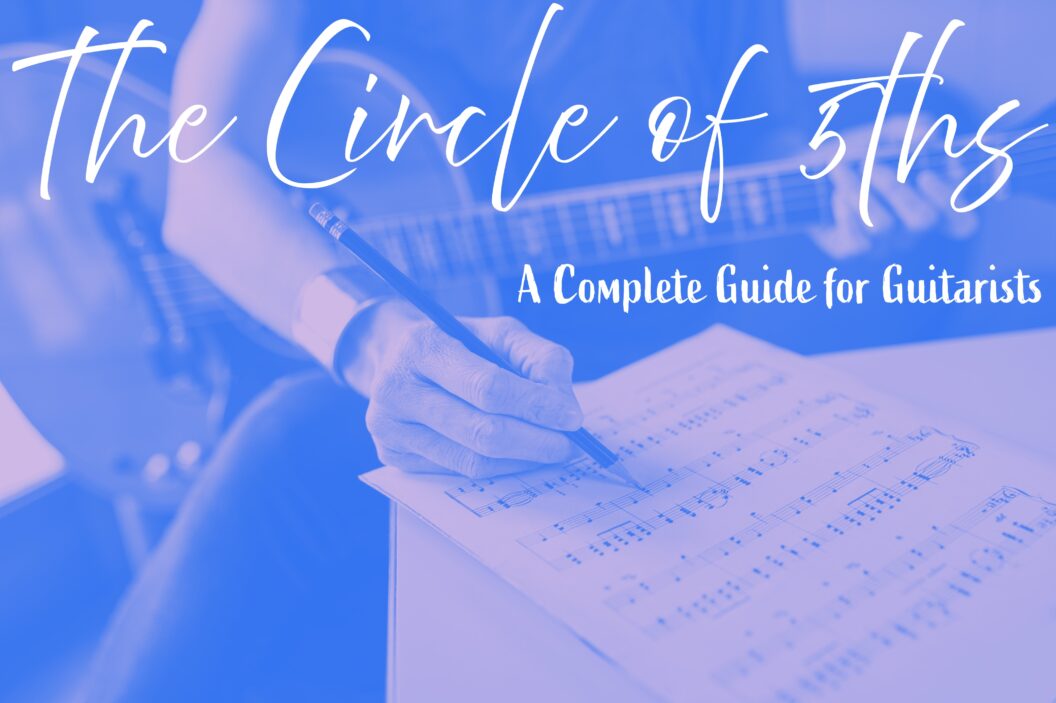The Circle of Fifths or Circle of Keys is a circle that contains all 12 notes and Major Keys in music. Think of it as a kind of calculator for figuring out all of the notes in all 12 Major Keys or scales. Very useful!
Other names for the Circle of Fifths include:
- The Cycle of 5ths
- The Circle of 5ths
- The Cycle of 4ths
- The Circle of Keys
The Circle of 5ths arranges the 12 notes in the chromatic scale clockwise around the circle in fifths, or counter-clockwise in 4ths starting at the top of the circle with the Key of C Major:
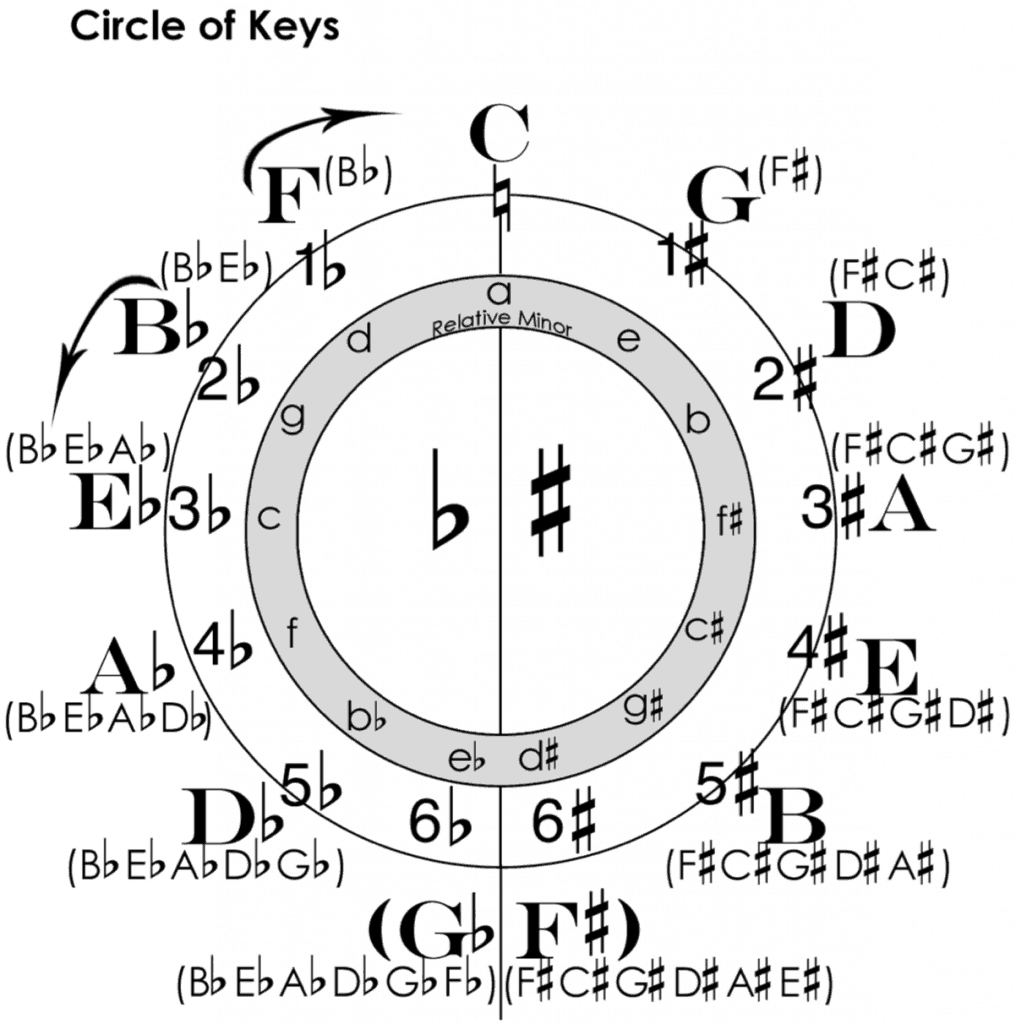
Clockwise Sharp (♯) side:
C – G – D – A – E – B – F♯ (G♭)
Clockwise Flat (♭) side:
G♭ (F♯) – D♭ (C♯) – A♭ – E♭ – B♭ – F
These notes on the outside ring of the circle represent our 12 Major Keys in music. Life in 12 Keys! The inner circle represents the Relative minor keys.
Learning The Circle of Fifths
So you might be asking why on Earth would I torture my guitar students with this cerebral music madness? What is the point of learning the Circle of Keys for a guitar player? Here are a few great reasons:
- Play Guitar in Key.
- Writes Songs in Key.
- Solo and Improvise in Key.
- Understand and construct Major and minor Scales.
- Understand and create Harmony.
- Read Music.
Enharmonic Notes on the Circle of 5ths
Enharmonic notes in music are notes that sound the same but have two different names. For example:
| Note | A♯ | B♯ | C♯ | D♯ | E | F♯ | G♯ |
| Enharmonic | B♭ | C | D♭ | E♭ | F♭ | G♭ | A♭ |
A♯ or B♭
B♯ or C
C♯ or D♭
D♯ or E♭
E or F♭
F♯ or G♭
G♯ or A♭
The Oxford Music dictionary defines the chromatic scale as a musical scale containing all 12 semi-tones of an octave. Also known as the twelve-tone scale.
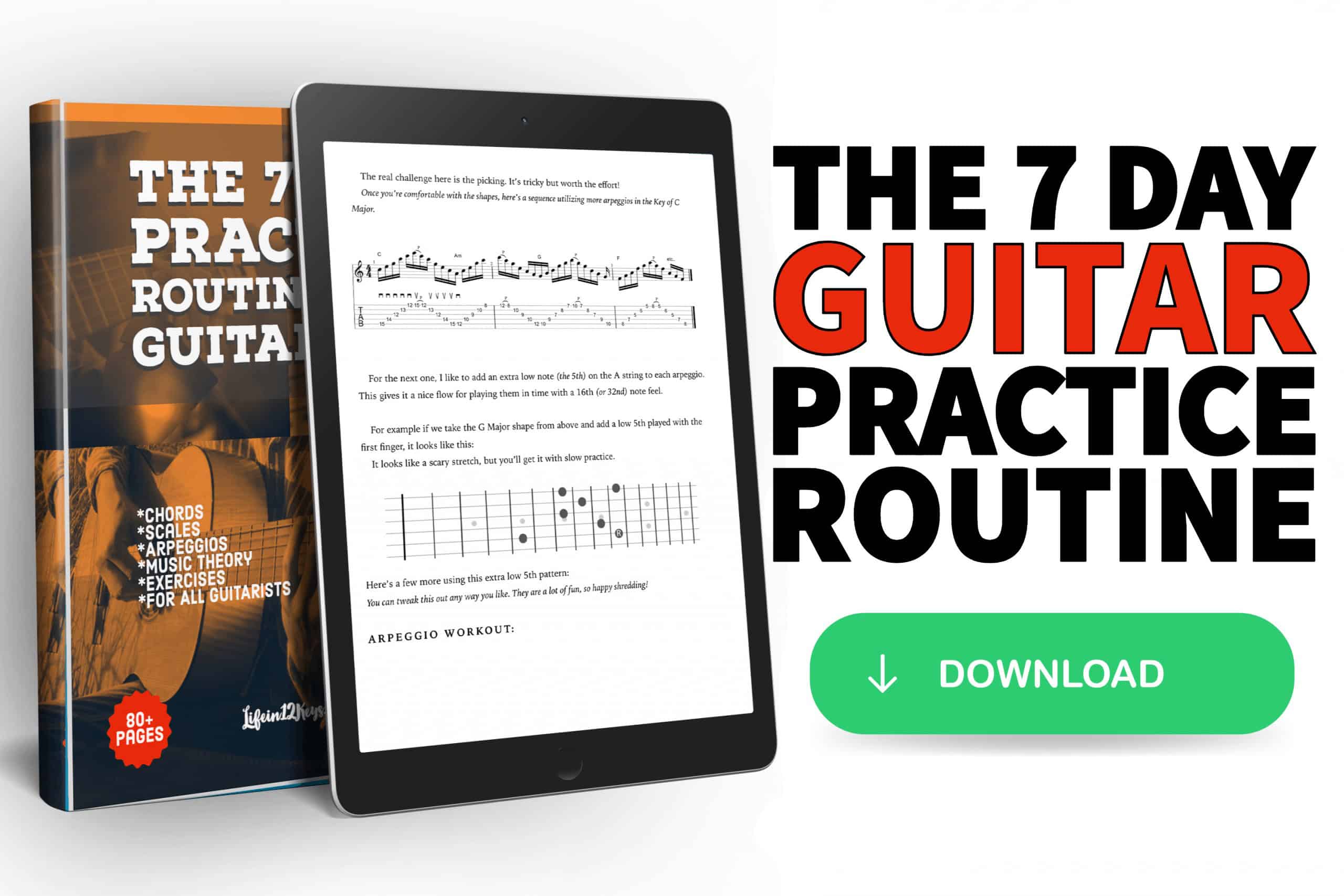
Clockwise Around the Circle of Fifths
If we travel clockwise around the circle we get all of our ♯ Sharp Keys:
| Key | C | G | D | A | E | B | F♯ | C♯ |
|---|---|---|---|---|---|---|---|---|
| Number of Sharps | 0 | 1 | 2 | 3 | 4 | 5 | 6 | 7 (all ♯s) |
| Sharp Notes | – | F♯ | F♯ C♯ | F♯ C♯ G♯ | F♯ C♯ G♯ D♯ | F♯ C♯ G♯ D♯ A♯ | F♯ C♯ G♯ D♯ A♯ E♯ | F♯ C♯ G♯ D♯ A♯ E♯ B♯ |
Notice as we travel clockwise in 5ths, we add 1♯ to each key. Each new key contains the ♯ notes before it plus one additional one. Now let’s take a look at all of those keys around the sharp side of the Circle of 5ths:
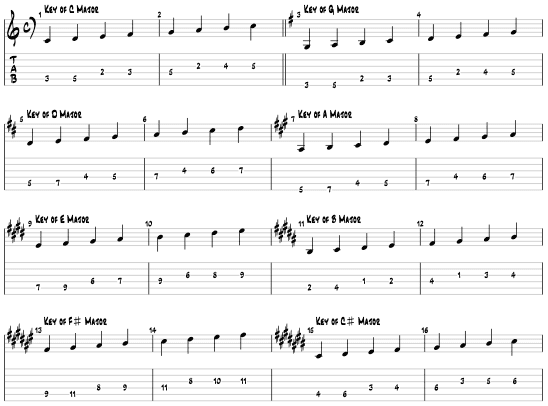
The Key of C Major isnt really a sharp key, but for the sake of learning, and because it’s at the top of the circle of keys, it is often included as such.
Counter-clockwise On the Circle of Fifths
If we travel around the circle of keys counter-clockwise, or in 4ths we get our ♭ flat keys. Clockwise around the circle the intervals go in 4ths.
| Key | F | B♭ | E♭ | A♭ | D♭ | G♭ | C♭ / B♯ |
|---|---|---|---|---|---|---|---|
| Number of Flats | 1 | 2 | 3 | 4 | 5 | 6 | 7 (all ♭s) |
| Flat Notes | B♭ | B♭ E♭ | B♭ E♭ A♭ | B♭ E♭ A♭ D♭ | B♭ E♭ A♭ D♭ G♭ | B♭ E♭ A♭ D♭ G♭ C♭ | B♭ E♭ A♭ D♭ G♭ C♭ F♭ |
As we did with the sharp side of the circle of fifths, use just add one ♭ as we go counter-clockwise around the circle. Each flat key adds the flat note before it, plus one additional ♭.
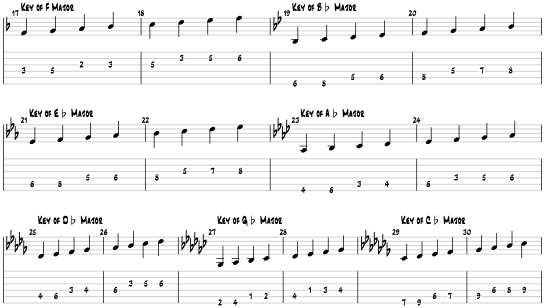
Key Signatures and The Circle of 5ths
Ever notice at the beginning of a piece of music that little cluster of flats or sharps? That’s the Key Signature.
Here’s a nice example of a J.S. Bach prelude handwritten with the key signature at the beginning of the piece (circled in red) from around the 1720s. What key has 4 flats? Try using the circle of 5ths above and then scroll down for the answer below.
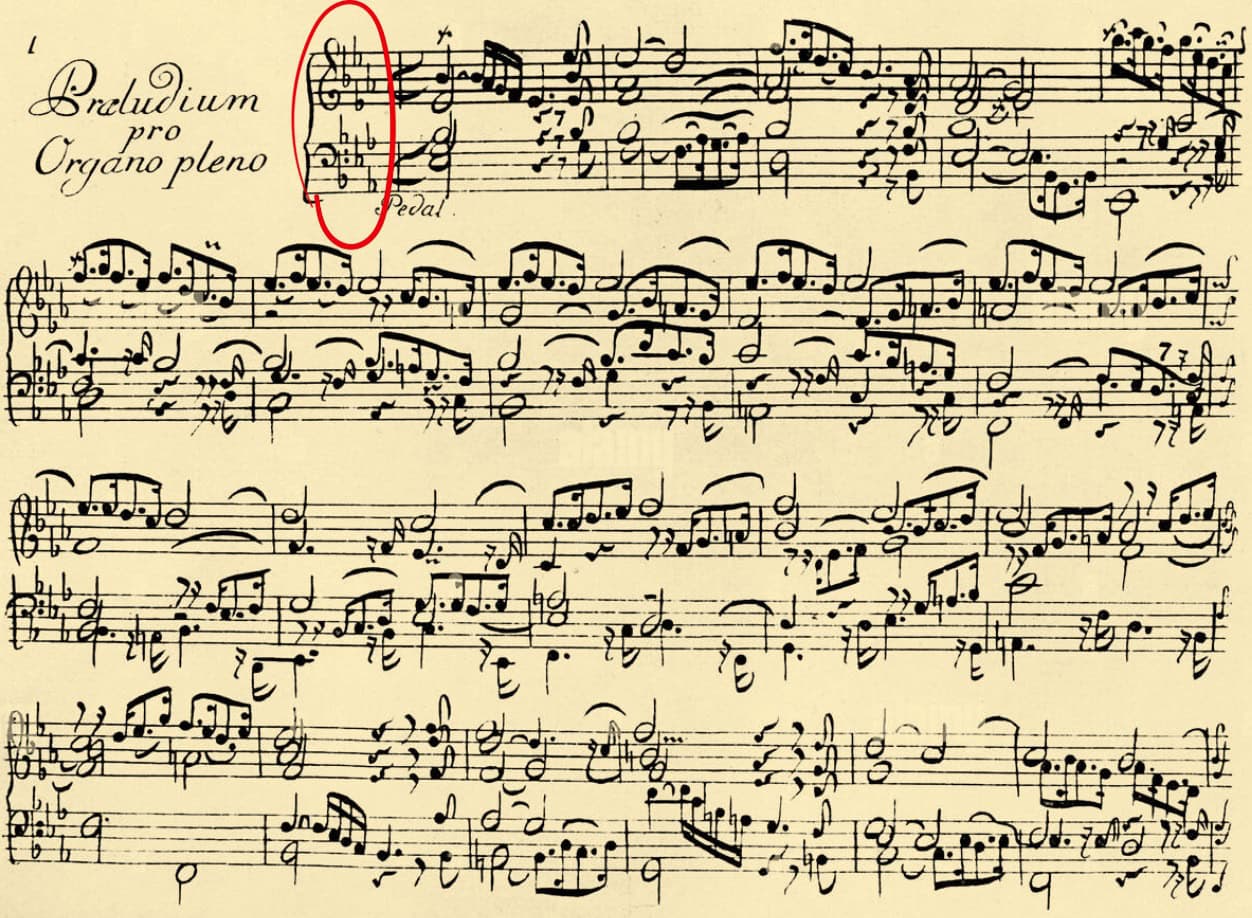
Answer: A♭
The 4 flat notes are: B♭ E♭ A♭ D♭
Scale: A♭ B♭ C D♭ E♭ F G A
How about the first 3 bars of Edward Van Halen’s seminal 1978 masterpiece Eruption? Wait, no sharps and no flats in the Key Signature? What key would that be in?

Answer: Key of C
Scale: C D E F G A B C
Pretty cool eh? Just another great reason to learn the circle of keys to figure out what Key your favorite song or piece of music was written in. Try looking up some music on the web and testing your new knowledge of Keys using the circle of 5ths.
Whenever you’re wondering What Key is that song in?, just look at the Key Signature and the answer is right there!
What are Accidentals in Music?
So what happens when we break the rules of The Circle of Fifths and deviate from our Key Signature? We get “Accidentals”. Not so much an accident, but more a purposeful, intentional change made to the musical piece by the composer.
In music, an accidental is like a temporary detour that changes the pitch of a note outside of the Major Key. When written, it’s like a secret code that tells the music what to do next. There are different types of accidentals including sharps (#) and flats (♭).
As you’ve probably guessed, a sharp accidental makes a note go up a half step, while a flat makes it go down a half step. Notice in Bar 3 of Eruption, Eddie goes out of Key for one note playing the D♯ instead of the D♮ that occurs in the Key of C Major: C D E F G A B C.
Identifying Accidentals
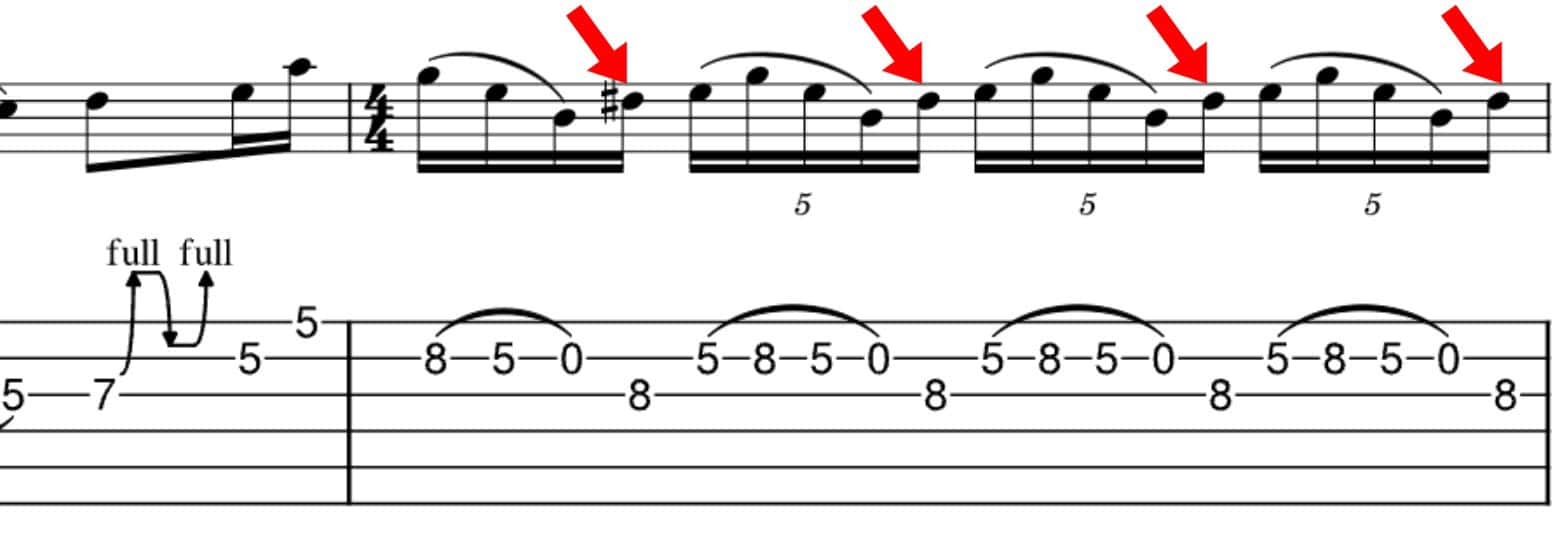
Notice once the accidental is indicated on the staff, it is repeated as an accidental until brought back into key by a natural (♮) or other appropriate indicator.
The natural (♮) accidental cancels out a sharp or flat. Less common but still important to know are double sharps (𝄪) and double flats (𝄫), which raise or lower a note by two half steps, or one whole step.
Accidentals are like little temporary surprises that can make music more interesting and exciting. Are we breaking the rules of music by playing accidentals? Maybe, but try not to think of Keys and Scales as rules so much as just a really useful framework from which to build on.
Remember:
- Sharp (♯) Raises a note by a half step.
- Flat (♭) Lowers a note by a half step.
- Natural (♮) Cancels a previous sharp or flat back to it’s natural note.
- Double Sharp (𝄪) Raises a note by two half steps (one whole step).
- Double Flat (𝄫) Lowers a note by two half steps (one whole step).
Circle of Fifths With Chords
Many years ago I created the simpler version of the Circle of 5ths pdf (above) for my own guitar students. Some may prefer it over the more complex circles that exist out there today.
Some of the more complex versions include the “Chord Wheel” style circle of 5ths like the example below:
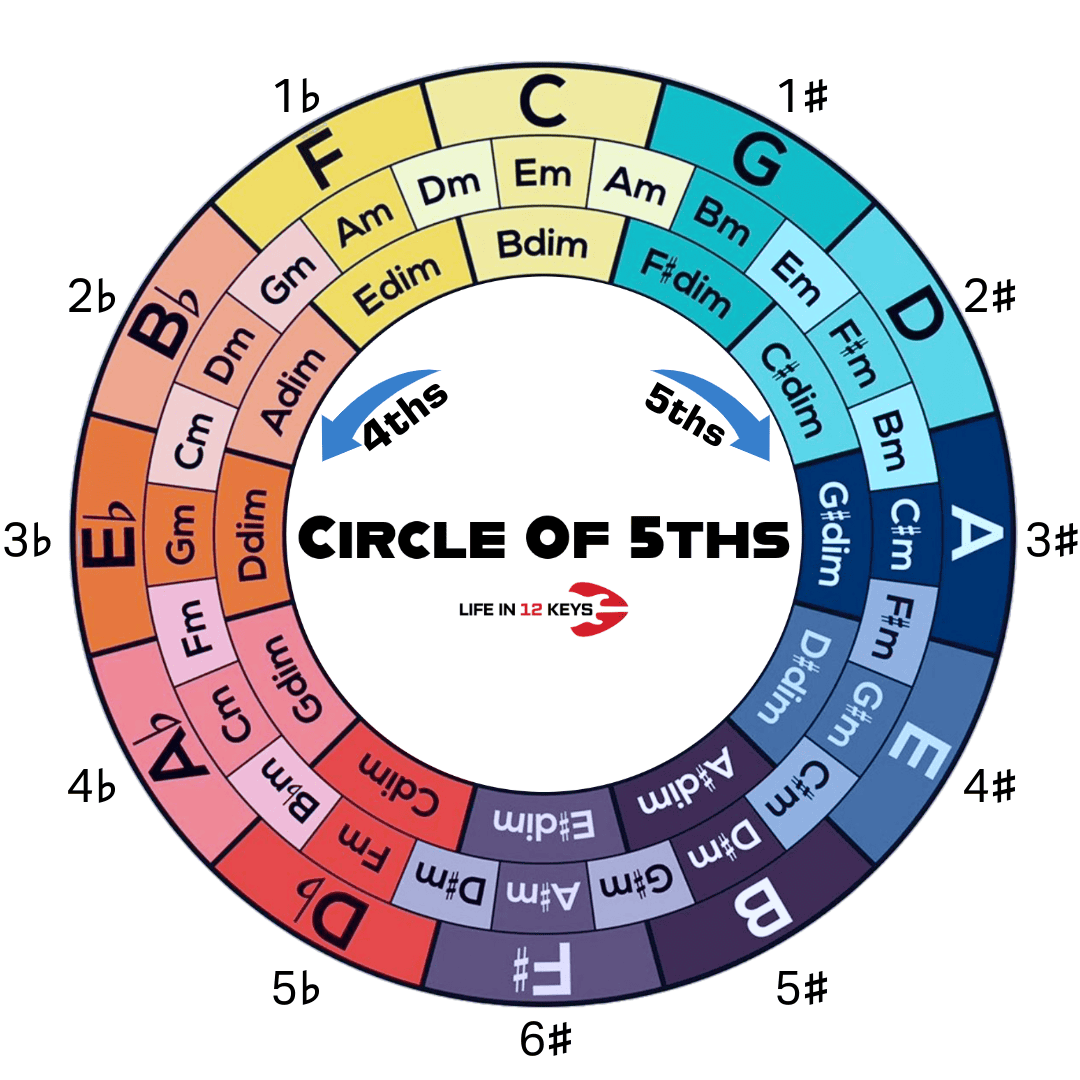
This is my take on an early 20th century Circle of Keys most likely utilized by Jazz musicians in the 1920s and beyond as a chord calculator. Let’s see how this works!
Another great use for the circle of 5ths is grabbing all of the chords in each Key. That is, building chords on all of the notes in a Major Scale like this:
- I C Major
- ii D minor
- iii E minor
- IV F Major
- V G Major
- vi A minor
- vii B diminished
Each Key around the circle of fifths contains 3 Major chords, 3 minor chords, and 1 diminished chord. Yes, every Major key uses this same formula!
If we look at the notes to the left and right of our Major Key, in this case C, and include the chords below C, we can find all of the chords in the Key.

Why are Roman Numerals used for Chords?
Roman numerals show chords based on the scale degrees instead of specific pitches like the number 1, 2, 5, etc. Each Roman numeral represents a different chord in a key:
I (Tonic): The home chord, the one that feels stable and resolved.
V (Dominant): The one that creates tension and leads back to the tonic.
IV (Subdominant): The one that moves away from the tonic or root.
ii, iii, vi, vii°: Other chords minor type chords that have unique roles in harmony.
Major vs. Minor: Uppercase Roman numerals indicate major chords (like I, IV, V). Lowercase numerals mean minor chords (like ii, iii, vi). Diminished and augmented chords are marked with ° (diminished) or + (augmented) in some types of fakebooks and charts.
Roman numerals make it easy to spot common chord progressions like ii-V-I in Jazz and I-IV-V in Blues and Rock. It’s used in most often in Jazz but is also seen in Classical, Rock, and and other contemporary music styles.
If you’re interested in learning more about chords, how they’re built, and how they work together in any given key, check out my Complete Guitar Triads Guide.

Like this lesson? Want me to email you a better looking PDF you can save or print? Want some other cool FREE lessons? Sign up here:
How To Use The Circle of 5ths
Once you understand how to build Major scales using the Circle of Keys, there are all kinds of cool ways you can use the information in your guitar playing.
Writing your own Songs: Using the circle as starting point to spark your musical creativity, you can easily put together songs and melodies within the framework of a key. From there you can use the formulas above to grab chords and make a song.
Building Riffs in a Key: If your guitar playing is beyond playing standard chords and strumming rhythms, you may want to use the circle of 5ths to find the notes in a Major or minor Key to build your own riffs. A riff can be single notes combined with chords to form an ethnic motif in a song. When I think of a Guitar Riff, I think of Rock, Metal and Blues guitar styles the most.
Famous Riffs for Guitar
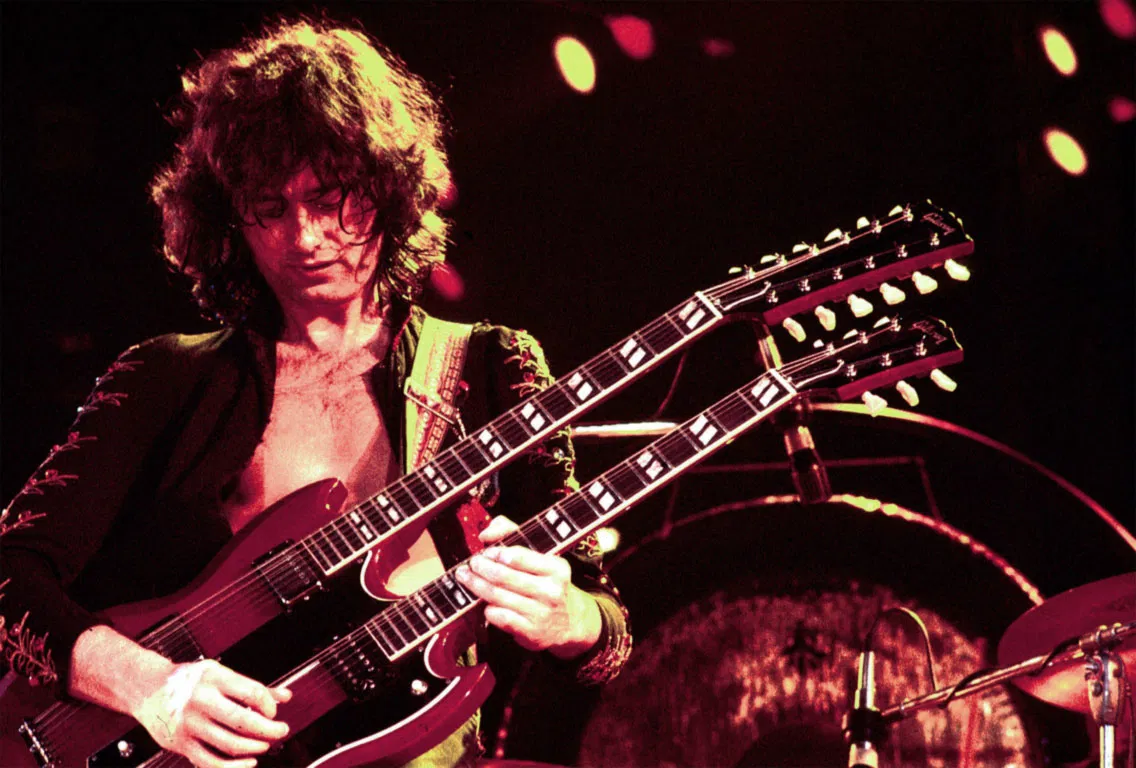
Some famous examples of Guitar Riffs:
- Whole Lotta Love – Led Zeppelin (E minor)
- Ain’t talkin’ ’bout Love – Van Halen (A minor)
- Lay it Down – Ratt (D Major)
- Sweet Home Alabama – Lynyrd Skynyrd (G Major)
- Unchained – Van Halen – (D Major)
- Purple Haze – Jimi Hendrix (E minor)
- Shine – Collective Soul (D Major)
Building solos and Improvisations: You can’t do much in the way of making up great guitar solos or improvising with a band if you don’t know any scales… or worse.. what key your playing in!
Pick a key from the circle, then go on YouTube and grab a backing track in that key. Once you have at least one position of that scale memorized, try improvising a solo in that key. Gradually work your way around the neck starting on different strings. If you need to brush of on scales ands their, grab my 7 Day Practice Routine for Guitarists, which includes Modal Scales, Pentatonic Major, minor, blues, and even Melodic and Harmonic minor shapes.
The Circle of Keys In Closing
I hope this guide on the Circle of Keys (Circle of Fifths) has demystified this ancient musical subject. For me learning my keys and understanding the relationship between chords, scales, and arpeggios was something that has enabled me complete freedom on the guitar.
Whether you’re a singer-songwriter, Metal Shredder, or traditional Jazz Guitarist, learning the circle of keys will enrich your playing in ways you never imagined, and last your entire lifetime in music.
As always, feel free to email me with any questions at [email protected]
Until next time, Happy Practicing!
Craig Smith is a professional Guitarist, Teacher, and Writer living in Sanford, Florida. Craig has taught guitar lessons, performed 200+ gigs per year for nearly 30 years, and published 4 guitar instructional books. When he’s not gigging or writing, you may find him by the pool with his wife Celeste, 4 Chihuahuas, and a drink. 🎸

